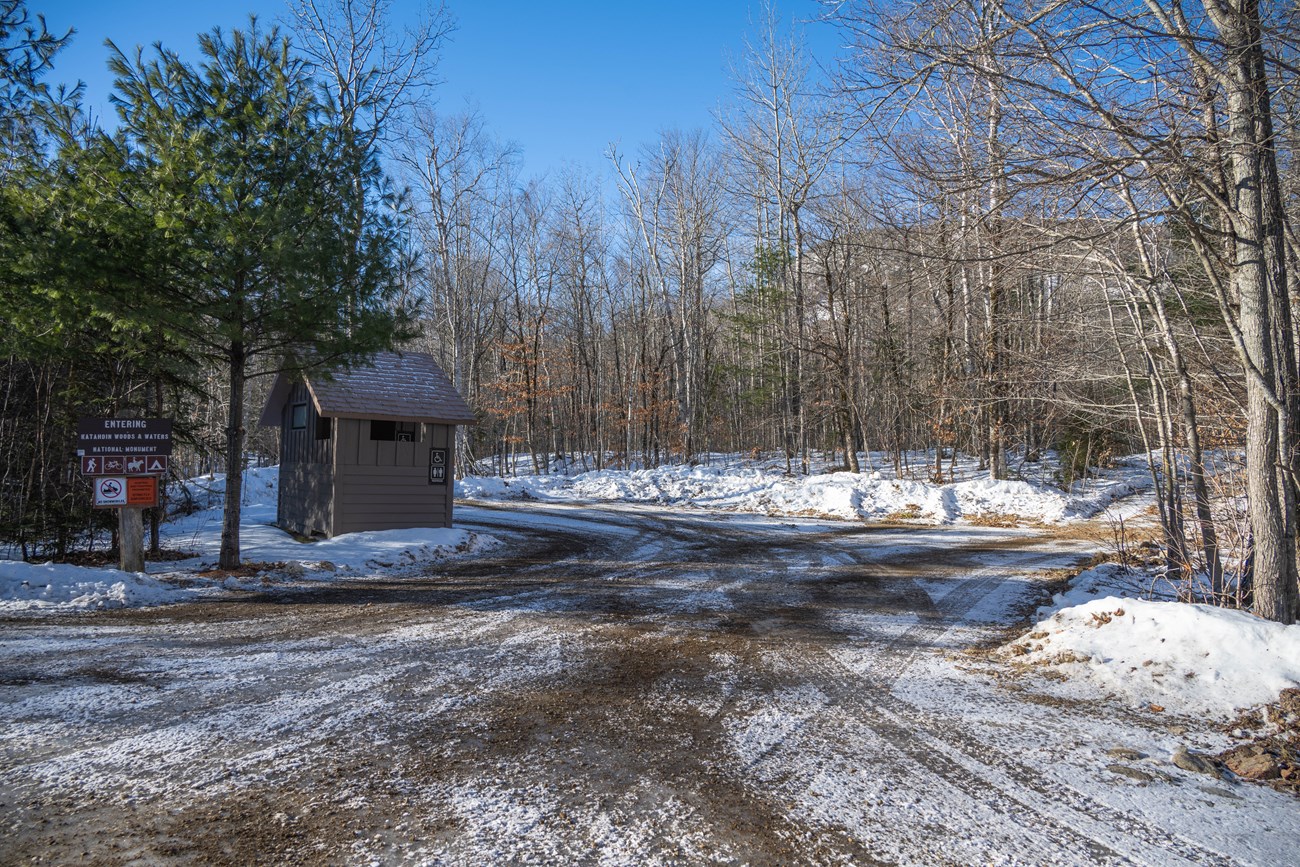
NPS / RWANG Winter visitors can expect a space of quiet solitude and beauty in the glistening Maine's North Woods. Visitors can experience the monument by cross country skis, snowshoes, or snowmobiles. Hiking with additional winter traction (microspikes, ice cleats, trail crampons) on waterproof hiking boots is recommended for icy conditions. For updated hours and weather, please visit the current conditions page. No ranger-led hikes nor talks are currently scheduled in winter. General Safety Guidance

NPS/ R. Wang WaterNo potable water is available, so all drinking water should be brought in or properly treated before drinking. Bringing an insulated container is a good way to keep liquids from freezing. |
Last updated: March 10, 2025
